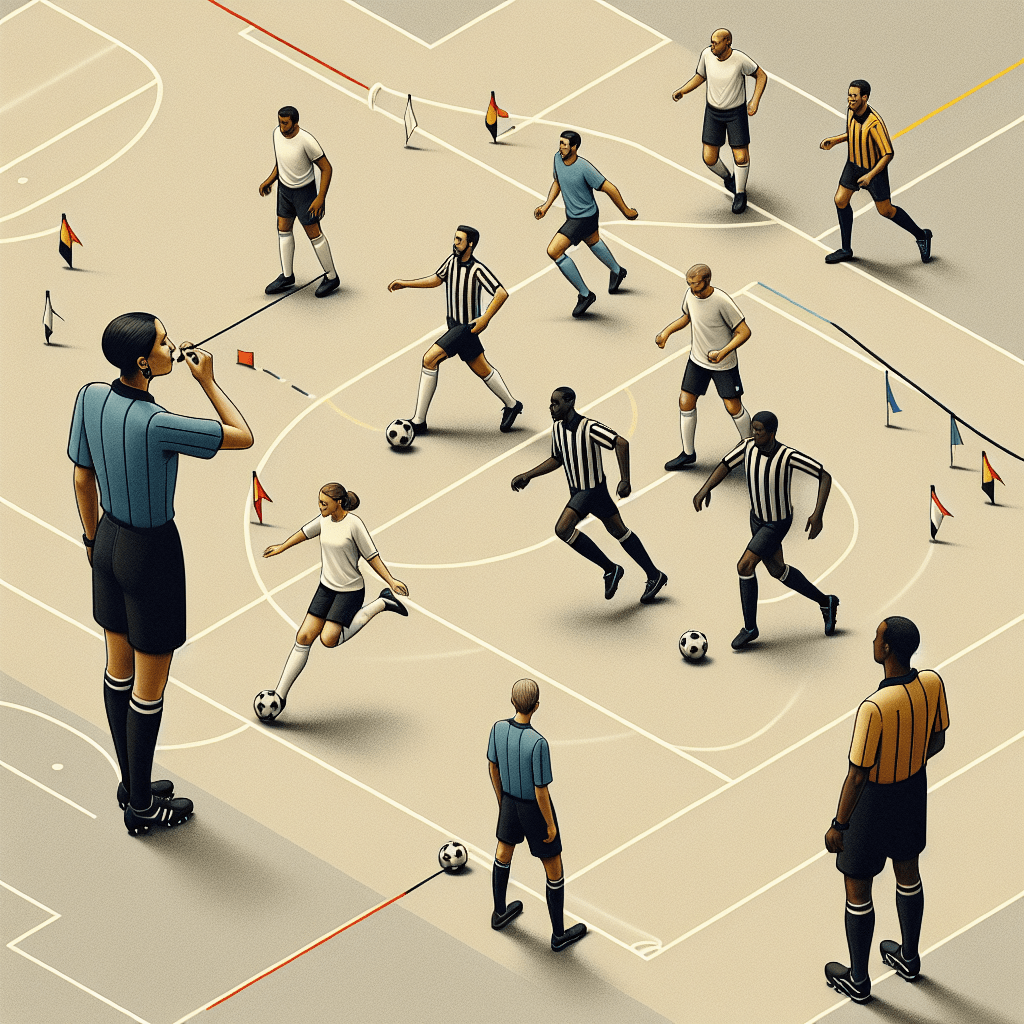[ad_1]
Speaking the Language of the Game: The Role of Communication in Soccer Officiating
Soccer, known as football outside North America, is a game characterized by its speed, intricacies, and intense emotions. Central to the control and fairness of this beloved sport is the role of officiating. Referees and their assistant referees are vital to soccer, tasked with enforcing the rules, ensuring player safety, and maintaining the spirit of the game. Among the critical skills required for effective officiating, communication stands out as a foundational element. This article explores the multifaceted role of communication in soccer officiating, how it influences the game, and why it’s essential for maintaining integrity and respect on the pitch.
Understanding the Landscape of Soccer Officiating
Before delving into the nuances of communication, it’s crucial to understand the landscape within which soccer officials operate. A typical soccer match is controlled by a referee and two assistant referees. In professional leagues and tournaments, a fourth official assists with administrative tasks outside the field of play. Advanced competitions also utilize additional assistant referees behind the goals and video assistant referees (VAR) to review decisions.
Soccer officiating requires a deep knowledge of the game’s laws, quick decision-making, physical fitness, and, significantly, excellent communication skills. Referees must convey their decisions clearly and manage interactions with players, coaches, and other officials effectively. The ability to communicate well under pressure is what often separates the good from the great in the world of soccer officiating.
The Language of the Game
Communication in soccer officiating extends beyond verbal exchanges. It encompasses a comprehensive system of signals, gestures, and the use of equipment like whistles and flags. This section aims to decode some of these communication channels to provide a clearer picture of how officials speak the language of the game.
1. Verbal Communication
The most direct form of communication on the field is verbal. Referees often use their voice to command respect, issue instructions, or explain decisions to players and team officials. The effectiveness of verbal communication can depend on the tone, volume, and clarity of the message. In international matches, where language barriers can exist, referees might also need basic knowledge of a common language, typically English, to communicate effectively.
2. Non-verbal Communication
Non-verbal cues play a critical role in officiating. Officials use a series of standardized gestures to indicate fouls, directions of throw-ins, goal kicks, and more. These gestures not only help communicate decisions across the field but also to spectators. Understanding and correctly interpreting these signals are crucial for players, coaches, and fans alike.
3. Equipment
The whistle, arguably the referee’s most powerful tool, is used to start and stop play, signal fouls, or indicate other game events. The pitch and frequency of the whistle can convey urgency or severity of a situation. Assistant referees use flags to signal offside, fouls out of the referee’s view, or other incidents. Advanced technology like VAR and communication headsets have also become integral, allowing officials to confer on decisions, enhancing both accuracy and transparency.
Challenges in Communication
Despite the established mechanisms for communication, soccer officiating faces significant challenges. Misinterpretations, especially in high-stress situations, can lead to misunderstandings and conflict. The intense atmosphere of matches, with thousands of screaming fans, can drown out verbal communications and even the sound of the whistle. Additionally, the subjective nature of certain rules means that decisions can be interpreted differently by officials, players, and spectators, sometimes leading to controversy.
Improving Communication in Soccer Officiating
Enhancing communication in soccer officiating involves a multi-faceted approach. Continuous education and training for referees on effective communication techniques are essential. Developing a consistent and clear signal system understood worldwide can help bridge the language gap. Furthermore, leveraging technology like VAR and communication devices can assist referees in making more accurate decisions and explaining those decisions when necessary.
The implementation of post-match reports and press briefings by referees could also enhance transparency and understanding of decisions made during the game. This open line of communication can build trust and respect between officials, players, coaches, and fans.
FAQs
1. Why is communication important in soccer officiating?
Communication is crucial in soccer officiating as it ensures that the game is played fairly, decisions are understood, and the safety of players is maintained. Effective communication also helps in managing the emotions on the pitch, preventing conflicts and misunderstandings.
2. How do referees communicate with players who speak a different language?
Referees often use a combination of universal gestures, basic phrases in a common language like English, and non-verbal cues. In international competitions, referees might also learn basic phrases in the languages of the teams playing.
3. Can referees use technology to communicate during matches?
Yes, in professional leagues and tournaments, referees and assistant referees use communication headsets to talk to each other throughout the match. The introduction of VAR also allows for better communication and review of decisions.
4. How can soccer officiating communication be improved?
Improvements can come from continuous training in communication skills, the use of technology, standardized signaling across all levels of soccer, and post-match transparency regarding decisions made during the game.
5. Why are gestures and signals used so extensively in soccer officiating?
Gestures and signals are crucial in soccer officiating as they provide a universal language that can be understood regardless of linguistic differences. They help in conveying decisions clearly and promptly across the field and to spectators.
In conclusion, communication in soccer officiating is an art that requires mastering various verbal and non-verbal skills. It is as essential as understanding the laws of the game. With the ongoing advancements in technology and training methods, the future of communication in officiating looks promising, aiming to enhance the fairness, transparency, and enjoyment of the game. As soccer continues to unite people worldwide, the role of effective communication in officiating will remain central to the sport’s integrity and appeal.
[ad_2]






